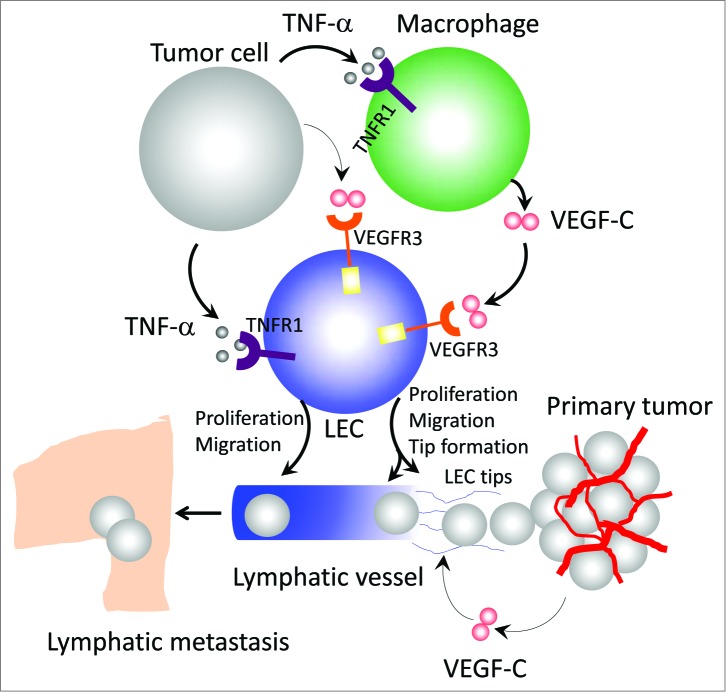Figure 1.
Mechanisms of TNFα-induced lymphangiogenesis and metastasis. Tumor cell-derived tumor necrosis factor α (TNFα) directly acts on lymphatic endothelial cells (LECs) to induce their proliferation and migration through interaction with TNF receptor 1 (TNFR1) receptor. In the tumor microenvironment, TNFα also recruits and activates macrophages that produce a high level of vascular endothelial growth factor C (VEGF-C). Through activation of VEGFR3, VEGF-C induces LEC tip cell formation, which is an essential process guiding lymphatic development. Additionally, the VEGF-C-VEGFR3 signaling pathway significantly contributes to LEC proliferation and migration. In primary tumors, the intimate interaction between TNFα-TNFR1 and VEGF-C-VEGFR3 signaling pathways in macrophages and LECs leads to ingrowth of tumor lymphatics and lymph node metastasis.

